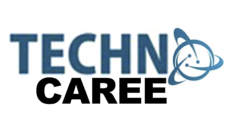Integrating GRC Software into Corporate Strategy: Benefits and Challenges

Introduction: The Strategic Role of GRC Software
Governance, Risk, and Compliance (GRC) software is more than a tool for meeting compliance requirements — it is a strategic asset that can enhance decision-making and corporate transparency. Integrating GRC software into a corporate strategy can help organizations take a proactive stance on risks and regulatory compliance, but it comes with its own set of challenges. This article explores the benefits and potential hurdles of embedding GRC software at the strategic level within an organization.
The Benefits of Strategic GRC Integration
Proactive Risk Management: GRC software allows companies to adopt a more proactive approach to risk management. By integrating risk assessments directly into strategic planning, businesses can identify potential risks early and devise strategies to mitigate them before they impact operations.
Enhanced Decision-Making: With centralised access to governance, risk, and compliance data, executives and decision-makers gain a comprehensive overview of the corporate risk landscape. This integration supports more informed decision-making, aligning it closely with the company’s risk appetite and compliance requirements.
Improved Regulatory Compliance: As regulatory environments become increasingly complex, GRC software plays a critical role in helping businesses stay compliant. The software can automatically update compliance frameworks and checklists as regulations change, ensuring that the business remains compliant with minimal manual intervention.
Streamlined Operations and Reduced Costs: Integrating GRC processes through software can lead to more efficient operations by eliminating duplicated efforts and automating routine tasks. This not only reduces operational costs but also frees up resources that can be redirected to more strategic initiatives.
Challenges of GRC Software Integration
Complexity in Implementation: Implementing GRC software as a strategic tool involves significant changes in workflows and processes. The complexity of configuring the software to match specific organizational needs can be a substantial undertaking, requiring careful planning and execution.
Change Management: The successful integration of GRC software requires buy-in from various stakeholders across the organization. Addressing the cultural shifts and training needs to ensure everyone understands how to use the new systems effectively can be challenging.
Data Integration and Quality: For GRC software to provide value, it must integrate seamlessly with other data systems within the organization. Ensuring data consistency, quality, and timely updates across all platforms can be difficult, especially for larger organizations with legacy systems.
Cost Implications: While GRC software can ultimately save money by preventing risks and non-compliance penalties, the initial investment and ongoing operational costs can be significant. Organizations need to consider these costs against the expected ROI and business value the software will deliver.
Best Practices for Successful Integration
Strategic Alignment: Ensure that the GRC software aligns with the strategic goals and objectives of the organization. It should support and enhance the business strategy, not just add a layer of technology.
Stakeholder Engagement: Engage stakeholders from all levels of the organization early in the process to secure buy-in and facilitate smoother implementation and adoption.
Continuous Training and Support: Offer continuous training and support to ensure all users are proficient with the new systems and understand their role in governance, risk management, and compliance.
Regular Review and Optimization: Regularly review the performance and impact of the GRC software on organizational strategy. Be prepared to make adjustments to both the strategy and the software configuration as needed to maintain alignment and efficiency.
Conclusion: Leveraging GRC for Strategic Advantage
Integrating GRC software into corporate strategy is not without its challenges, but the potential benefits make it a worthwhile endeavor for many organizations. By enhancing risk management, streamlining compliance, and supporting strategic decision-making, GRC software can significantly contribute to an organization’s resilience and success. With careful planning, robust implementation, and ongoing management, GRC software can transform from a functional tool into a strategic asset, driving business value across the organization.







